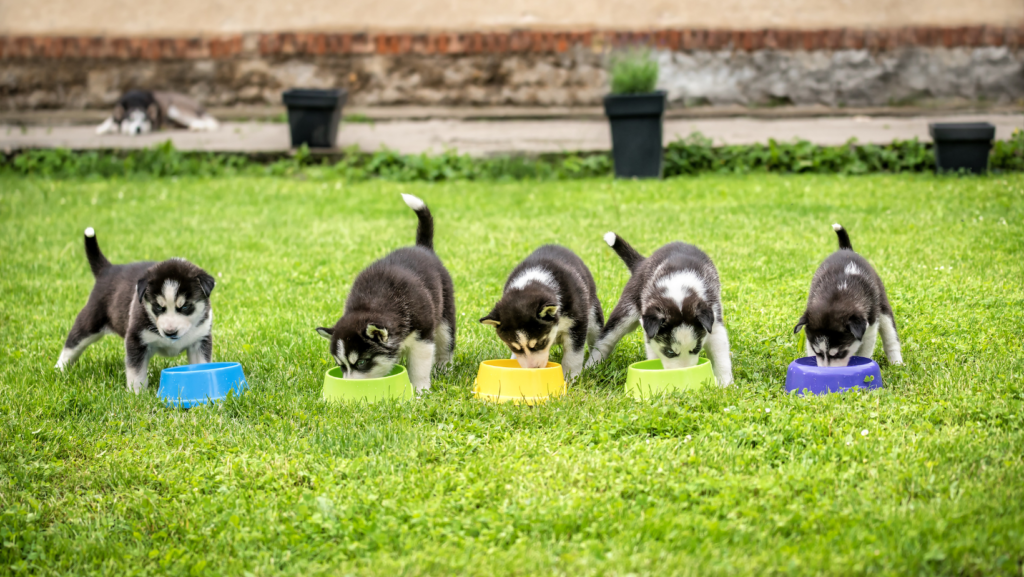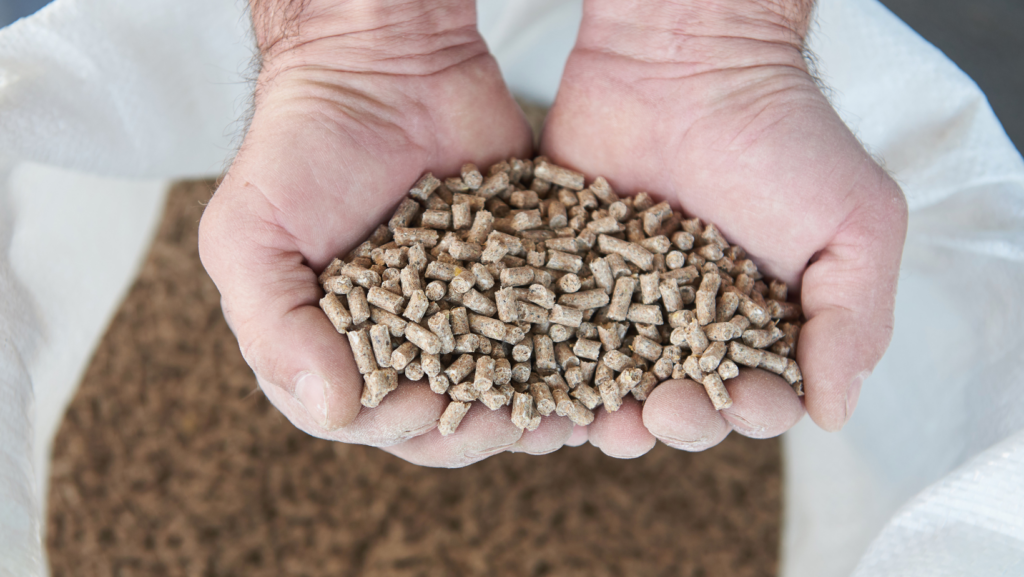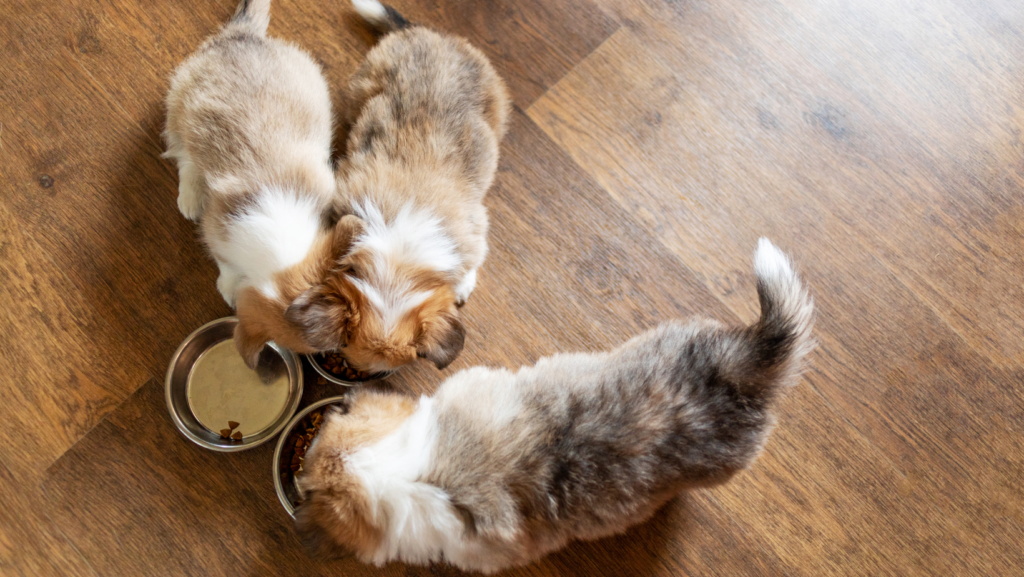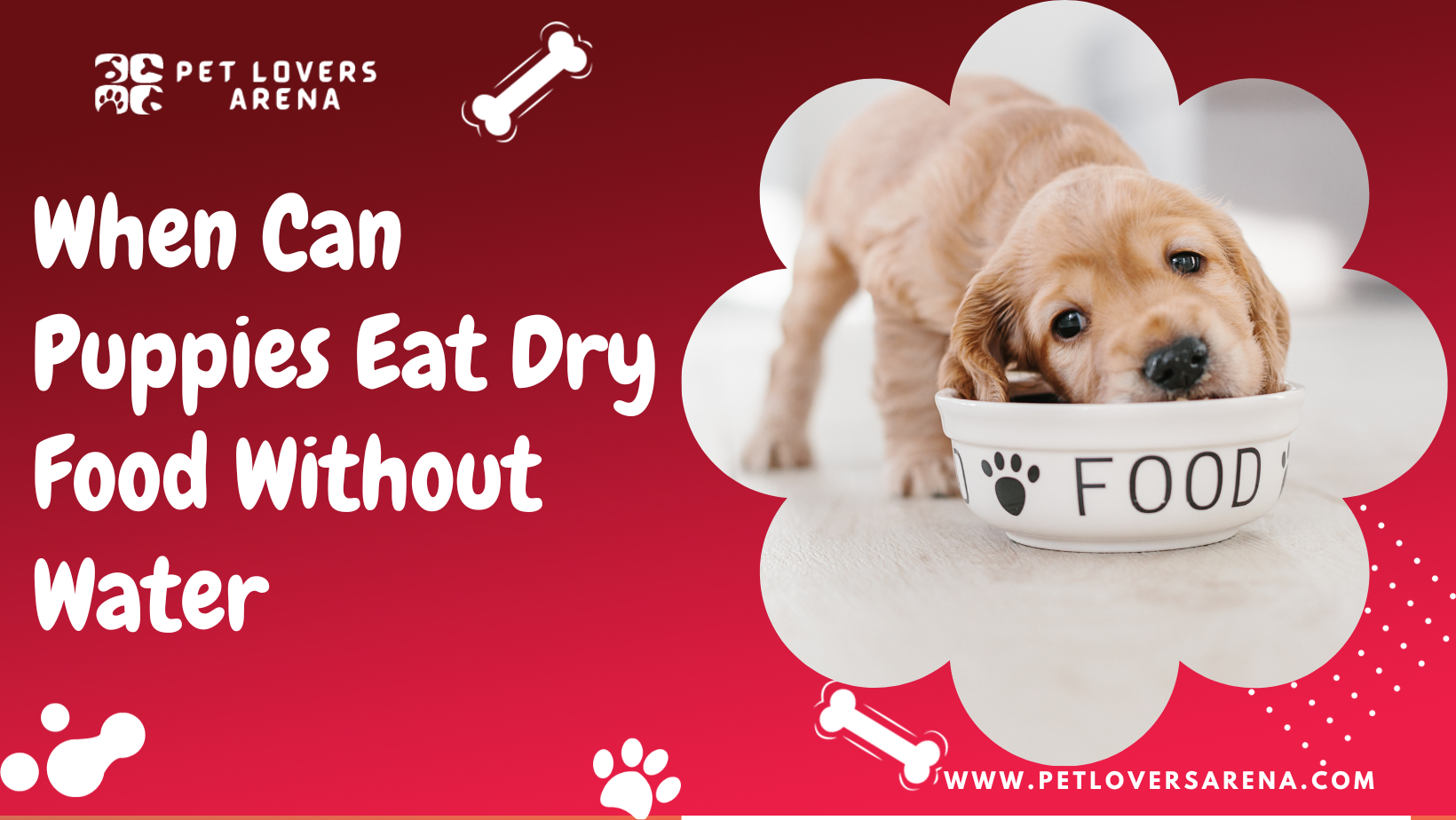The diet you decide for your puppy determines your puppy’s overall strength and performance, including its reaction to weaning.
Mixing dry food with warm water helps your puppy go through the weaning process without much discomfort. One of the significant milestones in a pup’s life is having them transition into adulthood.
They stop eating food mixed with water and can now eat dry food. You don’t want your pup to develop a picky behavior in eating. Therefore, read through this article and learn how and when you should feed your puppy solid food without water
Puppies and Dry Food Without Water
A puppy entirely depends on its mother for about eight weeks. After isolating your puppy from the mother dog, you need to figure out when to start feeding him dry food without any water.
The first step towards raising a healthy pup is buying certified puppy food to provide him with all the essential nutrients.
The next vital step is learning the duration you need to feed your puppy with watered puppy food, which is a dry kiddle for most dog owners.
At one month of age, the food you provide your puppy with should be in a position to eradicate the puppy’s need for its mother’s help in getting the right nutrients for full development.
In well-calculated intervals, adjust the quantity of drinkable water that you add to the puppy’s dry food for a whole month.
An abrupt reduction of water causes more harm than good because the puppy will most likely lose a taste for dry food, which results in low dieting at the delicate puppy’s age.
An appropriate water reduction rate every two to three days for this month is about ten percent. The whole gradual water to dry food ratio adjustment gives your puppy a healthy competitive ability to extract more nutrients from the dry food without having a rough time with the food texture.
Most healthy puppies usually have a fully grown set of baby teeth by the eighth week, which gives room for a diet that includes foods that aren’t soggy.
How to Introduce Dry Food to Your puppy’s Diet?

There are several methods that dog owners use when introducing this diet, but the most efficient one is adding warm water to the puppy’s dry food.
The American Society for Prevention of Cruelty to Animals proposes this transitioning method. Raising a healthy puppy requires a combination of a third of dry food and two-thirds of warm water for the whole one month weaning period.
A mushy texture made by smashing the soaked dry kiddle is easy to consume for your puppy and provides the required nutrients for healthy bone development.
Ensure that you get a shallow and spill-free feeding container for your puppy to avoid food contamination. For about three weeks, gradually regulate the water to dry food ratio by having two-thirds of dry food and a third of warm water every week. The process should have an extra week for the disadvantaged and sickly puppies.
How Much Dry Food Should You Feed Your Puppy?
According to Cesar’s Way, feeding your puppy four times a day allows him to get as many nutrients from the food as possible.
Naturally, puppies have smaller bellies than adult dogs, and for this reason, they require regular feeding intervals with small amounts of food.
The body size and weight of the puppy you are raising determines the quantity of dry food you will feed him. Manufacturers of the dry dog food have their feeding quantity recommendations written on the food package.
By the tenth week, your puppy can comfortably consume dry food without a single ounce of water. This period now becomes the perfect time to always have the puppy’s feeding container in the vicinity with the dry kiddle.
Dry Food Feeding Intervals

The little bellies of two-month-old puppies are only able to accommodate four small meals every day. After the second to around the sixth month, your puppy should be able to consume at least three meals per day and remain healthy.
After the sixth month, the playful nature of puppies takes their mind off lunch. This period requires an additional amount of food in your puppy’s breakfast and supper.
Having food readily available for the puppy at all times is detrimental to your puppy because he may get carried away by the taste and eat all the food. This could result in tummy aches and eventual feeding behavioral issues.
When Should You Feed Your Puppy Dry Food Without Water?
Puppies need training in feeding schedules. Feeding your puppy at regular intervals every day helps in familiarising the puppy with the feeding schedule.
For most puppy owners, puppies get their breakfast at 7 a.m, lunch at 12:30 p.m, and supper at 6:30 p.m. This timing allows nutrient absorption in the morning after waking up, giving the puppy ample time to digest and play. The evening meal gives your puppy room to digest the food and get enough rest comfortably.
Common Mistakes in Feeding Dry Food to Your Puppy

The most common mistake is inappropriate dieting, where food meant for more giant dog breeds is fed to smaller dog breeds.
The result of this uninformed decision is weak joints in your puppy as a result of insufficient calcium. Most people ignore the food specifications about breeds and end up feeding puppies dry food meant for mature dogs.
You may want your dog to grow fast and healthy but having food in the feeding bowl at all times is not the way to do it. The puppy ends up consuming more food than its delicate stomach, and the digestive system can handle, which strains the dog.
According to the puppy’s age and body weight, the best practice for fast dog development is regular feeding intervals. Most people assume that feeding a puppy with a lot of dairy products helps in improving its health. Instead, they end up overfeeding the puppy with milk, resulting in digestive issues and diarrhea, leading to dehydration.
Conclusion
Different breeds of dogs require specific types of dry food. Ensure you read the puppy’s food package to get the correct feeding specifications.
With the information you have received from this article, you are now in an advantaged position of feeding your puppy dry food without water comfortably.
Meet Madison Phillips, your compassionate guide to pet well-being. With experience from VCA Animal Hospitals and Laxton Vet Clinics Bellaire Inc. Madison honed her skills and embraced the balance of medical expertise and compassion, through her articles, she simplifies pet care, whether you’re a newbie or an experienced pet parent.

